The Complete Package for the Recreational Player – Part 4 – Strings 101
Let’s take a deeper dive into strings.
Part Three identified the five (5) leading string materials as:
- Nylon
- Natural Gut
- Kevlar®
- Polyester
- PEEK
Not necessarily in order of usage, which would probably be:
- Nylon
- Polyester
- Natural Gut
- PEEK
- Kevlar®
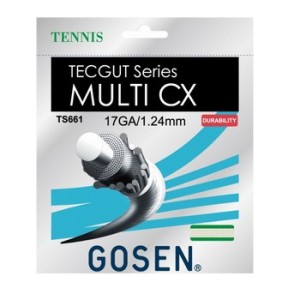 Let’s start with Nylon™ (polyamide)
Let’s start with Nylon™ (polyamide)
- Nylon is a very good material! It is relatively inexpensive, has good physical properties, and can be highly modified in chemistry and construction. A tennis string made using nylon can be as few as two (2) components up to over 1000 components, which would include very tiny fibers used in a multi-filament construction.
- Nylon strings can be easily infused with polyurethane and other materials to create some very comfortable strings. Depending on the application, nylon may not be the most durable string material, but other attributes make it a constant player in the design of new tennis strings.
- Nylon has a decidedly “non-hip” connotation, undeservedly so!
Why you would choose it:
Good value, many construction options, Comfortable
Why you would not choose it:
High COF (not much sliding to catch the ball), not a “cool” string
Now to Polyester (PET)
- The polyester-based string has been around for some years and is used for durability purposes. One of the first was an offering from Trevira called PolyStar. For you, old enough to remember polyester suits, this is the same fiber, only thousands of times larger! Do you want that in your racquet?
- Polyester can also be highly modified chemically, but not so much construction-wise, since it is mostly used in a monofilament form.
- Polyester monofilaments can be extruded into almost any shape.
- The slick, round monofilament construction allows the string to move and contribute to ball rotation or “spin”.
- Polyester-based string loses tension quickly, so maximum performance is fleeting, as in four to six hours.
- Polyester-based string is very durable, regarding breaking, if “long-term” maximum performance is not a top priority.
- Polyester string is typically very stiff and has very low elongation, which becomes stiffer as the ball impact increases. If you don’t want or already have arm issues, I would avoid polyester-based string.
- If you really must have it, reduce the reference tension to forty pounds!
- Yes, you read that correctly.
Why would you choose it:
Good durability, pros use it, good for wet climates, saying you use “poly” places you in the “cognoscente.”
Why you would not choose it:
Loss of tension quickly, Inconsistent performance, Injury potential
- Aramid fiber is very stiff in tension but flexible in bending
- Aramid fiber is very, very strong
- Aramid fiber may never break
- Aramid fiber is typically used in hybrid formats
Why would you choose it:
Good durability, decent performance in hybrid formats
Why you would not choose it:
Very stiff string bed, unforgiving, increased racquet stress
Natural Gut (no chemical name)
- As the category suggests, this is a natural product using beef components processed in a very “hands-on” fashion, creating a very expensive final product. No beef is slaughtered just to make tennis string, but the string requires the components of about two (2) animals.
- So far, this material is the best there is for touch, feel, power, and overall performance. Natural gut will “play better longer” than any other current material.
- Natural gut can be used in a hybrid format to lend some restoring force to the other material being used, and it adds good ball-grabbing capabilities.
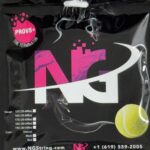
Why you would choose it:
The ultimate playing experience, great arm protection, good durability, saying you use natural gut places you in the “cognoscenti”. Natural gut does not move around much in dense string patterns.
Why you would not choose it:
Expensive, does not get along well with rain, BUT today’s natural gut is coated, unlike in the old days.
NOTE: IART did a thorough review of the NG ProV5+ natural gut, their top-of-the-line product. We found this to be a worthy product and a good choice, given the fact that the most popular natural gut strings on the market are quite costly, even more so now due to price increases.
Based on our testing of the NG string, IART Executive Director Tim Strawn arranged a new sponsorship for premium subscribers that gives them a 20% discount on the ProV5+ string, netting the cost down to just under $24 per set. You can go HERE to see our review of the ProV5+ natural gut string. To become a premium subscriber to the IART, go HERE
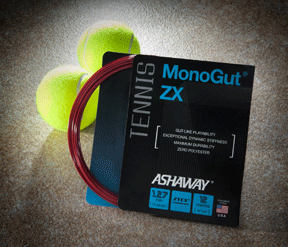 The Relatively New Kid on the Block PEEK (polyether ether ketone)
The Relatively New Kid on the Block PEEK (polyether ether ketone)
- PEEK has been around in the medical field for quite a while, but the chemical and mechanical properties of this material are relatively new to tennis strings.
- PEEK is not easy, like nylon or PET to process, and for some, it is not easy to string with. However, the properties make this very close to a natural gut in performance. The high elongation of PEEK makes it perfect for those trying to avoid arm and wrist injuries.
- Incredible durability is yours if you are a pretty “clean” ball striker. PEEK does not tolerate severe “shanking” at the top of the racquet head.
- The properties of PEEK yield a very consistent “feel” throughout the life of the string, which can be a very long time.
- PEEK exhibits a low string-to-string coefficient of friction, which allows the string to move and capture the ball, creating rotation or “spin”.
Why you would choose it:
Arm-friendly, very good durability, long-term top-level performance, impervious to moisture
Why you would not choose it:
Failure due to mis-hits (shanking) is expensive, although not as expensive as natural gut
This brief overview of strings is based on all things being equal regarding string pattern. It is important to consider all aspects of your game and physical stature when selecting a tennis racquet string. The references to any string are not based on any brand, only the properties of the basic material.
There are many “additives” that can be added to the material mix so keep evaluating string until you find the one that works for you…you got it?
Go HERE for part 1
Go HERE for part 2
Go HERE for part 3

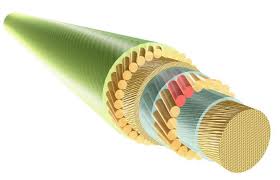
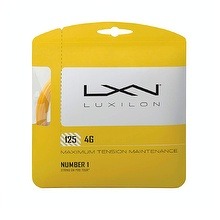
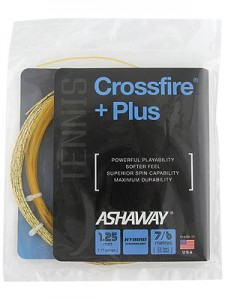
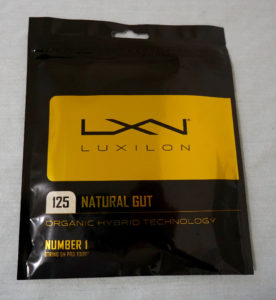
Comments (2)
John, this is a nice summary to keep handy!
Thanks, Bob!
I hope it is useful information for everybody…
John